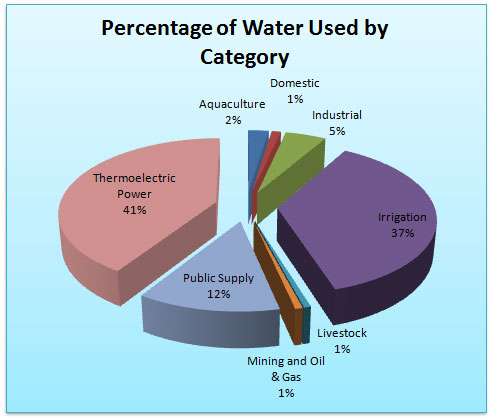Share:
HYDRAULIC FRACTURING WATER USAGE
Water and sand can make up more than 99.5 percent of the fluid used to hydraulically fracture a well. Water acts as the primary carrier fluid in hydraulic fracturing. Because the multi-stage fracturing of a single horizontal shale gas well can use several million gallons of water, it is critical that large quantities of relatively fresh water be reasonably available. The quality of the water is very important because impurities can reduce the efficiency of the additives used in the process.
Most water used in hydraulic fracturing comes from surface water sources such as lakes, rivers and municipal supplies. However, groundwater can be used to augment surface water supplies where it is available in sufficient quantities. In some states, the water used for fracturing is controlled by a river basin commission or water resources board such as the Susquahanna River Basin Commission ‡ or the Delaware River Basin Commission ‡. In other places, water is owned by private individuals who can allocate it at their discretion.
The amount of water used in hydraulic fracturing, particularly in shale gas formations, may appear substantial, but it is small when compared to other water uses such as agriculture, manufacturing and municipal water supply. For example, electric generation uses nearly 150 million gallons a day in the Susquehanna River Basin, while the projected total demand for peak Marcellus Shale activity in the same area is 8.4 million gallons per day.
The chart below shows estimated water usage in the United States for 2005 by category. Oil and gas operations are only part of the Mining category which in total comprised about 1% of the total water used in the United States in 2005.

The use of horizontal well high volume fracturing has accelerated significantly since 2005. The current total amount of water used for hydraulic fracturing as a percentage of water use by sectors is not yet available. As soon as the USGS publishes its report for 2010, this section of the website will be updated accordingly. However, according to a report developed for the Department of Energy by ALL Consulting, “Estimates of peak drilling activity in New York, Pennsylvania, and West Virginia indicate that maximum water use in the Marcellus, at the peak of production for each state, assuming 5 million gallons of water per well, would be about 650 million barrels per year. This represents less than 0.8 percent of the 85 billion barrels per year used in the area overlying the Marcellus Shale in New York, Pennsylvania, and West Virginia.”
WATER USE MANAGEMENT
One alternative that states and oil and gas operators are pursuing is to make use of seasonal changes in river flow to capture water when surface water flows are greatest. Utilizing seasonal flow differences allows planning of withdrawals to avoid potential impacts to municipal drinking water supplies or to aquatic or riparian communities. In the Fayetteville Shale play of Arkansas, one operator is constructing a 500‐acre‐ft impoundment to store water withdrawals from the Little Red River obtained during periods of high flow (storm events or hydroelectric power generation releases from Greer’s Ferry Dam upstream of the intake) when excess water is available. The project is limited to 1,550 acre‐ft of water annually (one acre‐foot is equivalent to the volume of water required to cover one acre with one foot of water). The company has constructed extra pipelines and hydrants to provide portions of this rural area with water for fire protection. Also included is monitoring of stream water quality as well as game and nongame fish species in the reach of river surrounding the intake. Source: Estimated Use of Water in the United States 2005, USGS 2005.
In addition, new treatment technologies have made it possible to recycle the water recovered from hydraulic fracturing. The reuse of treated flowback fluids from hydraulic fracturing is being conducted by some operators in the Marcellus Shale region and at least one operator (Devon Energy) in the Barnett Shale in Texas.